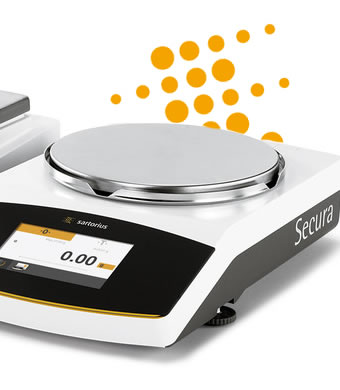Laboratory balances are used to measure tissue, liquids, and solids in a wide range of settings, including environmental, clinical, and research labs. To put it simply, a balance is generally used to measure the mass of an object. There are several different types of balances, and each one comes with its own set of features.
Before you buy a balance, you need to consider:
- The accuracy you need
- The maximum capacity you need
- The application that you need to measure
Analytical Balance
Analytical balances are capable of measuring small masses with incredible precision. These balances are typically used in quantitative chemical analysis and can measure 4 decimal places to the right of the decimal point. Since analytical balances are highly sensitive, even an air current can impact the measurements. This is why these scales often come with a draft shield to prevent inaccuracy.
If you are planning to use analytical balances, make sure you have a dedicated space in order to prevent interference from environmental factors. You will also need to monitor and calibrate these balances frequently. Most analytical balances consist of an automatic, internal, motor-operated calibration weight. You can also use external weights for calibration.
Precision Balance
A precision balance is cheaper and less accurate than an analytical one. It can measure up to 200 gm; an analytical balance, on the other hand, can measure up to 320 gm of mass. These balances are also known as top-loading balances and have the readability of up to 3 decimal places to the right of the decimal point. They are extremely quick – a precision balance can give you a read-out within a couple of seconds.
Unlike analytical balances, precision balances are not affected by the air current or other environmental factors.
Analytical Balance vs. Precision Balance At A Glance
| Features | Analytical Balance | Precision Balance |
| Accuracy | Extremely accurate | Not as accurate |
| Readability | Up to 4 decimal points to the right | Up to 3 decimal points to the right |
| Readability Range | Between 0.0001g to 0.00001g | Between 1 mg (0.001 g) to 1 g |
| Environment Factors (like air current) | Can affect the reading | Have no effect on the reading |
| Cost | Expensive | Less expensive |
If you want maximum accuracy, an analytical balance is the best option since it can provide the accuracy of 0.0001 to 0.00001g. But if you don’t need exact accuracy at small levels, a precision balance could be a good option instead.
Not Sure Which Balance You Need? Contact Us!
At AAA Weigh, while our analytical balances offer solutions to the most precise and complex weighing tasks, our precision balances can effectively accomplish tasks such as quality control, purity analysis, density determination, formulation, materials and conformance testing, and packaging and filling.
We offer several balances with data tracking and output capability to allow system integration like Laboratory Information Management System (LIMS) for GLP Compliance.
If you are looking for a balance that can simplify your weighing tasks and produce reliable results ideal for data handling with a wide range of tracking and connectivity capabilities, our analytical balances are a perfect choice.
Not sure which balance will be best suited for your applications? We are an ISO-accredited manufacturer and supplier of high-efficiency balances with 42+ years of experience in the industry. Give us a call at 866-728-6292 or write to us online and we will sort you out.






